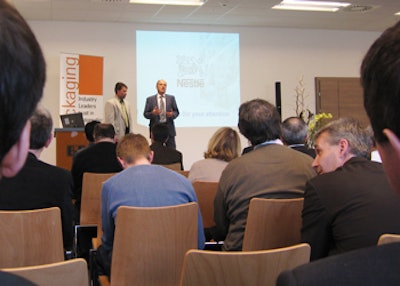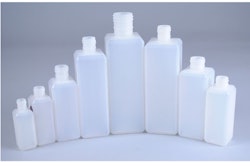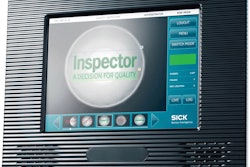
B&R Industrial Automation’s first press conference for global trade journalists took place in Salzburg, Austria and the company’s headquarters in nearby Eggelsberg. B&R’s general manager, Peter Gucher, kicked off the event by citing some impressive statistics.
In 2010, B&R produced 130,000 control systems, 100,000 industrial PCs, 120,000 drive systems and one millions I/O modules. Over a million of their control systems are installed in machinery worldwide.
Major investment pays off
So, it was good that the company’s management had the self-confidence to invest in the middle of the recession in construction that has quadrupled the production facility to 80,000 square meters or 800,000 square feet.
That capacity has already proven necessary to handle continued growth. Sales grew 47% on the wings of global economic recovery to 360 million € -- nearly one half billion US dollars.
That growth is coming from around the world – from China, Korea, India, Japan, North America and Brazil – in addition to the company’s original market, Europe.
Ultra-modern facility in harmony with community
The trade editors split into groups led by the international manager for their region to tour the facility, including highly automated SMT (surface mount technology) circuit board assembly systems that run 24/7, extensive quality control systems, a 20,000 pallet position storage retrieval system automated by the company’s own motors and controls, and a tech center hosting nearly 400 engineers.
The juxtaposition of sleek, ultra modern production facilities with an herb garden supplying the employee cafeteria and the surrounding rural countryside was not lost on several of the visiting editors.
And despite the plant’s massive size, the campus has been sited so that forest protects the view from neighboring farms. In fact, the dominant feature of the town, visible from the adjacent village, is a traditional Austrian church with its distinctive high walls and spire atop the hill.
This vision of a tranquil community makes it hard to imagine that below lies a company consuming 60 million electronic components every month and running night and day.
Topics focus on global standards, multinationals’ strategies
The audience comprised a mix of controls engineering and packaging magazines, so the two-day meeting’s content reflected their interests, ranging from the latest in open safety technology to an overview of packaging trends and the implications for automated packaging machinery.
One shocking prediction is the speed with which the packaging market is shifting to Asia. B&R global technology manager Maurizio Tarozzi cited a recent Freedonia research report stating that in just three years, the North American packaging machinery market will shrink in terms of world share of consumption from 18% down to 11%. China alone will account for 41% of the world’s packaging machine sales.
This reality will force changes in how packaging machinery is designed, sourced and supported. It will clearly be difficult for suppliers to grow without establishing a presence in Asia very soon. Some automation suppliers, including B&R with nine offices in China alone – are there. The company has been in China for 15 years and is growing in India, Korea, Japan and other major Asian economies as well.
Many European packaging machine builders are also there, such as Krones and KHS in beverage and Uhlmann in pharmaceutical. Largely absent are nearly 500 U.S. packaging machine builders. These companies must now change their focus from competing with imports to becoming exporters themselves. That is a sea change in the post World War II era which has seen the domestic U.S. market grow apace of the economy at large.
Nestlé automation strategy
There’s no greater example of global presence in the food industry than Nestlé, whose packaging operations strategy is also changing with the times. Global manager for electrical and automation engineering Bryan Griffen, based at the company’s headquarters in Vevey, Switzerland, addressed the group on the second day of the conference. The following statement was released at the press conference.
Instead of specifying only one supplier, Nestlé has identified Rockwell, B&R, Siemens and Elau as their preferred suppliers for packaging automation control. That means in the future Nestlé will focus less on one specific control provider for packaging equipment, but will be very dogmatic about the implementation of standards and open technologies.Nestlé is going to specify OMAC PackML
To do so, Nestlé is committed to use the OMAC Packaging-Machine-Language guidelines “PackML.” At present time Nestlé is doing a pilot implementation together with the preferred suppliers. “Using the PackML PackTags and the State Model in conjunction with a standard communication protocol, the Nestlé central packaging automation engineering team will provide a clear specification for packaging machine equipment. This specification will also provide a common setup for horizontal machine to machine communication,” says Bryan Griffen, Global Head of Automation and Process Control; Nestlé Corporate Engineering.
The goal is to exchange all necessary information for an easy packaging line integration, based on one global standard. This information includes start-stop, halts, error handling and speed information, in order to support an automatic integration of machines from different suppliers / OEMs with different automation control equipment.
Using the OMAC PackML State Model guarantees a common engineering approach independent of the machine builder and/or control provider. The first step of the implementation is based on the existing libraries for the OMAC PackML implementation of the preferred suppliers and this already shows a lot of benefits and is the basis for the proof of concept.
In a second phase Nestlé will work on a more detailed specification document and together with the technology providers this specification will be reviewed, tested on real equipment and translated into standard, ready to use libraries.
Nestlé supports openSAFETY standard
Working with different technology providers also raises the question of a common safety technology standard. Each technology provider is normally pushing its own safety protocol, based on the proprietary communication network. In order to guarantee that all applications can exchange the safety related information based on one safety network, Nestlé supports the openSAFETY standard. openSAFETY provides one single communication standard for safety application across the board of all technology suppliers.


























